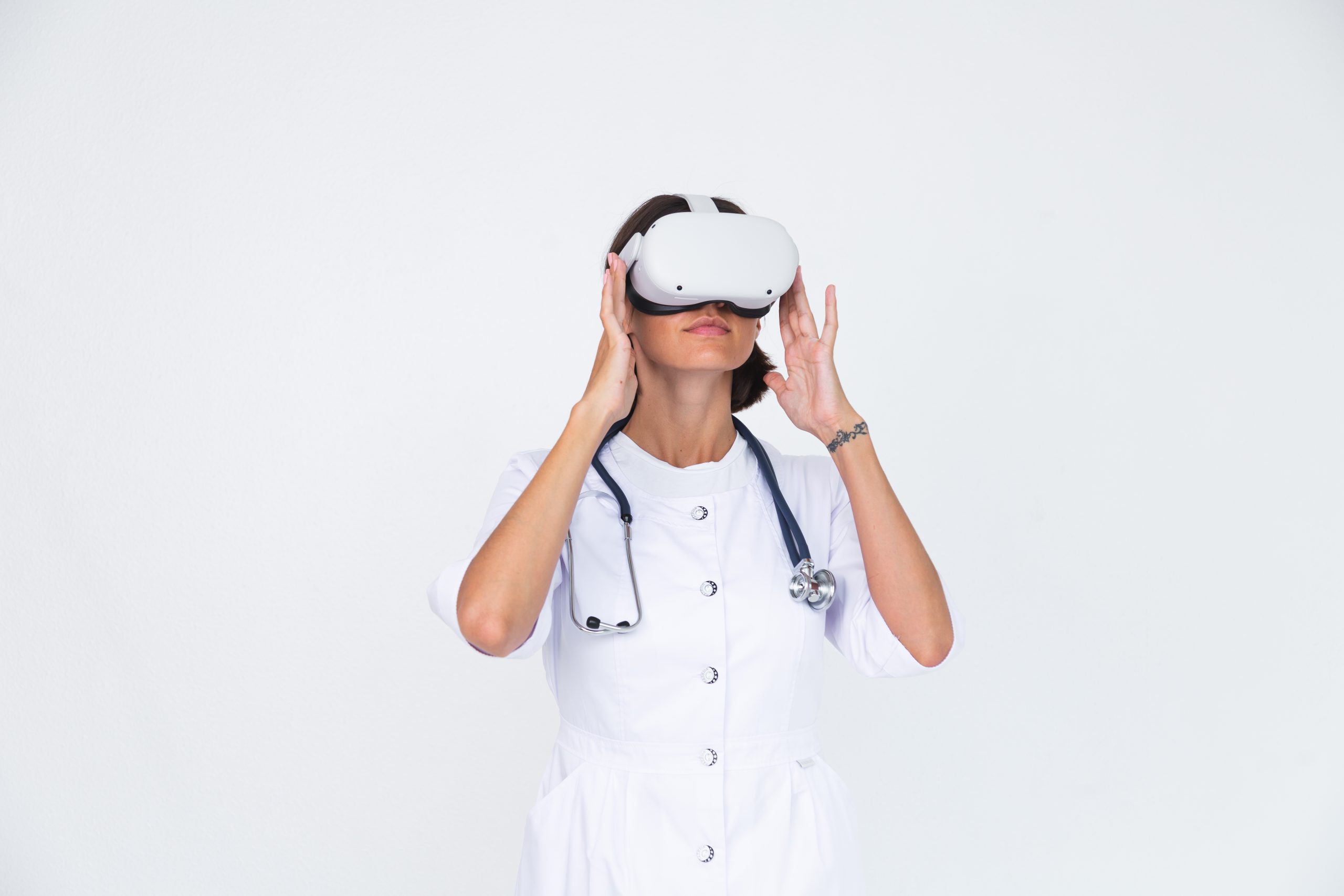AI can now be incorporated into every facet of healthcare, from management to diagnosis to treatment. For instance, it can help to automate processes and evaluate large patient data sets for better, quicker and more affordable treatment. These developments could contribute to better clinical outcomes, cost savings, and overall improved public health.
But there are still certain problems with AI that remain unresolved including data interchange limitations, moral and legal concerns, and regulatory compliance requirements.
It is of note that the global market for AI in healthcare is expected to grow from US$10.4 billion in 2021 to US$208.2 billion by 2030, being driven by expanding patient data sets and the rising need for lower healthcare expenses.
How AI and machine learning can be used in the healthcare industry
All aspects of the world of healthcare are being revolutionized by AI, from chatbots to robotic surgeries and virtual assistants. Here are some of the current uses of AI:
1. Precision medicine

It is a revolutionary step for healthcare organizations to have the ability to forecast which treatment approaches would be most effective for patients based on their biological characteristics and the treatment strategy.
For instance, AI technology based on machine learning (ML) is used in designing medication. ML algorithms can categorize digital images of cells that have been exposed to various experimental drugs. This information is later used to forecast which untested compounds can be further researched.
2. Virtual nursing assistants
The virtual assistant offers a chatbot experience where patients are able to regularly track their physical activities and ask questions instead of speaking with a healthcare expert on the phone or via video conference. However, if there is a need to arrange an appointment, the assistant can help do this too – a cost-saving feature.
These sophisticated AI-powered software tools can recognize symptoms, regulate medications, and help with long-term health problems 24/7. Some virtual assistants also offer access to telenurses, teledocs, and information on how to handle medical emergencies such as conducting CPR.
By 2026, virtual nursing assistants are to bring about US$20 billion to the healthcare industry.
Example of a virtual nursing assistant and how it works
3. Robotic surgeries
A breakthrough in the surgical sector has been brought about by AI technology through collaborative robots. These reduce the possibility of tremors or other unintentional movements during surgery due to their high precision.
 In 2019, the market for next-gen surgical robotics was estimated to be around US$10 million. By 2030, this value is expected to register an astonishing growth to up to US$884 million.
In 2019, the market for next-gen surgical robotics was estimated to be around US$10 million. By 2030, this value is expected to register an astonishing growth to up to US$884 million.
Example of AI-powered collaborative robots
Taiwanese surgical robotics company, Brain Navi Biotechnology, intends to obtain approval from the US FDA for its NaoTrac, an autonomous neurosurgery navigation robot. The invention will be used by surgeons as alternative high-precision neurosurgical assistance.
The company has already managed to successfully carry out trials in the Hualien Tzu-Chi Medical Center. Its device makes use of surface mapping auto-registration technology to accelerate surgical procedures with real-time imaging and less invasive results by fusing robots, AI, and machine vision. It will also be used for other procedures including endoscopic brain surgery.
4. Smart Administrative Workflow Assistance
By ensuring that important tasks are given the highest priority, administrative workflow automation helps healthcare professionals to reduce the time spent on day-to-day duties.
Administration processes can benefit from innovations such as voice-to-text transcriptions and AI can also assist in automating non-patient care tasks, for instance requesting tests, recommending drugs, and creating chart notes.
AI can improve the efficiency of administrative processes in a variety of contexts including billing and the handling of claims which is otherwise expensive and time-consuming.
AI can also help keep track of patient reports and chart notes, as well as generate test orders.
5. Wearable devices and extended reality

Extended reality (XR) can enhance the way specialists are trained from a clinician-centric perspective, giving surgeons more confidence prior to operating on patients.
AI can also be used to collect data from wearable tech (fitness trackers, smartwatches, biosensors) to help patients by detecting possible health issues. This is particularly important when it comes to chronic diseases such as diabetes or cancer.
For instance, the latest device dubbed the FreeStyle Libre 2 Flash Glucose Monitoring System, presented in 2022, instantly notifies its wearer when blood sugar levels are too low or show a sudden increase. This could be crucial for some patients because diabetes-related, uncontrolled high blood sugar can harm the neurological system, eyes, and other organs, most frequently the kidneys.
6. Identifying cancer and selecting treatment
Over recent years, researchers have managed to successfully create AI instruments that can improve cancer imaging by making this quicker, more precise, and even more educational. For instance, now radiologists with less training can spot prostate cancer more easily with the use of AI, which will also help them to spot suspicious cancer areas and rule out anything that could be confused for cancer.
Healthcare experts can use imaging tests to better understand several issues including determining whether something is cancerous or not and, if it is cancer, how quickly it is developing. It will also help to determine whether the treatment is helping or not. According to studies, AI may enhance the promptness and precision of responses from medical professionals.
The downside of AI implementation in healthcare
Although AI is certainly pushing the boundaries of the healthcare industry forward, it nevertheless has its flaws:
- Because this is a complicated system, businesses need employees with a certain set of skills to design, manage, and deploy AI systems. The list of skills involves knowledge of cognitive computing and machine learning amongst others.

- Even a small mistake could cause a system to crash or negatively impact the intended outcome.
- The development of AI is being constrained by the lack of professional standards and qualifications in AI/ML technology.
Final word:
Advancements in supercomputing and AI make it possible to provide more accurate and individualized healthcare services to patients. The deployment of AI frameworks is also viewed as an effective tool to lower healthcare expenses for both patients and experts while enhancing the quality of treatment.
AI will evolve to be incorporated into healthcare systems in a variety of ways with a focus on the patient. However, it may take many years before AI in healthcare completely replaces people, despite certain rumors suggesting that it can work just as well or even better than human experts for specific processes.
Today, businesses attempt to keep up with the latest trends and seek insights from reliable experts to gain an advantage over their competitors. This applies to all industries, including healthcare technology. If you’re looking for ways to gain valuable insights from reliable experts, don’t hesitate to contact RightAngle Global. We make sure that each specialist is relevant and qualified to respond to the given questions.
Suggested reading:
Top 5 wearable healthcare technologies: trends and forecasts
Telecommunication trends to follow in 2022 and beyond
Smarter, safer and traffic-free – is this the new face of the transportation industry?
Share to

